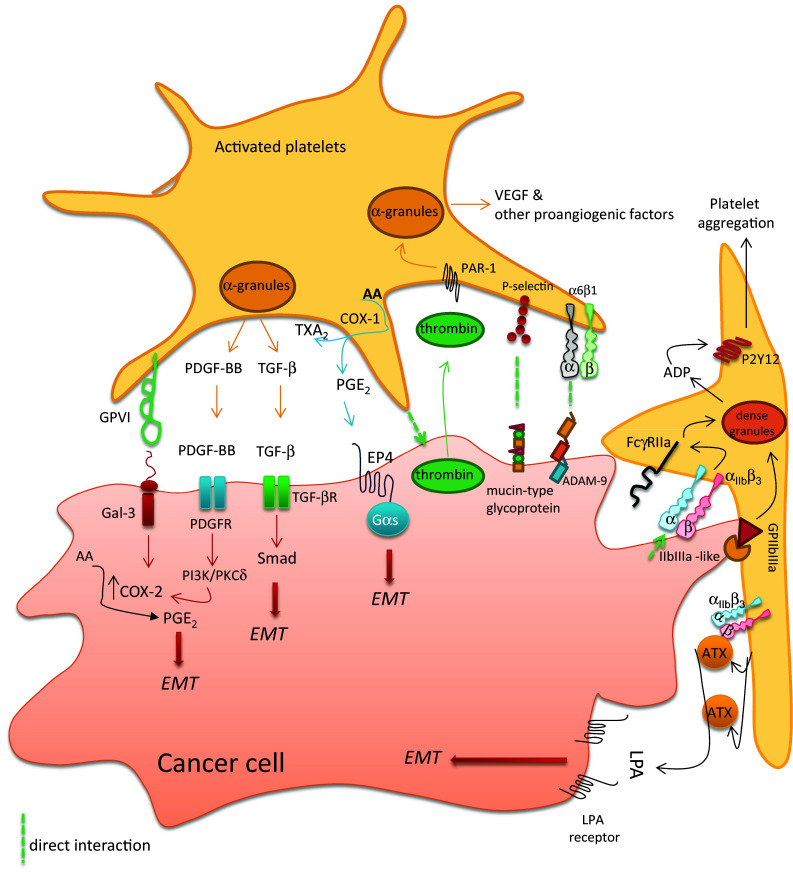Fig. 3.

Molecular determinants involved in the crosstalk between platelets and cancer cells. Platelets interact with tumor cells through different receptors expressed on platelet surface (i.e., collagen receptor GPVI, P-selectin and the integrins α6β1 or αIIbβ3, and GPIIb/IIIa). The direct interaction between the two cell types triggers platelet activation, the secretion of platelet α-granule content, i.e., growth and angiogenic factors (such as PDGF, TGF-β, and VEGF). Moreover, platelets release ADP from dense granules and synthesize prostanoids, including TXA2 and PGE2. The interaction of platelets with cancer cells causes the induction of COX-2 in cancer cells, which contributes to a further increase in PGE2 production. Aberrant PGE2 generation is a hallmark of cancer. The overexpression of COX-2 in cancer cells involves both transcriptional and posttranscriptional mechanisms mediated by the release of PDGF. Among the numerous events triggered by platelet–cancer cell crosstalk, there is the induction of the epithelial–mesenchymal transition (EMT) phenomenon in cancer cells, which can be mediated by soluble mediators(proteins and lipids) (modified from Dovizio et al. [97] and Guillem-Llobat et al. [98])
